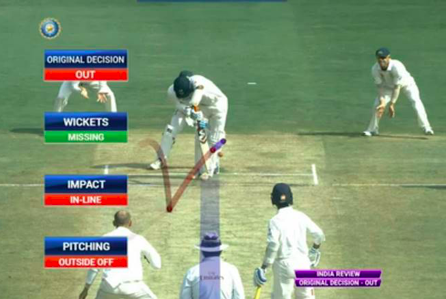The Umpire Decision Review System or UDRS which is more commonly known as DRS came into existence during an India vs Sri Lanka contest in 2008. After its successful debut, it was officially launched in November the following year in a test match featuring New Zealand and Pakistan. One of the main reasons for its birth was to eliminate controversial calls and reduce umpiring howlers. So far it hasn’t been all that rosy for this system where some countries like India have opted to do away with it in the past due to inconclusive evidence.
So what is DRS and it is deteriorating umpiring standards instead of improving it?
The DRS is a complicated yet helpful system which assists umpires in correcting incorrect decisions on the field. Here’s what this system is all about:
- First things first, the umpires check whether the ball bowled is a legal delivery or not.
- Every team gets a set of reviews based on the format. For example, in Tests teams get two reviews apiece while that number is halved in ODI’s and T20I’s.
- The team challenging an umpire’s decision must make a “T” sign and should do it within 15 seconds.
- A team will lose their review if it is an unsuccessful one, but can retain it if either the “impact” or “wickets hitting the stumps” is deemed to have been umpire’s call, irrespective of the decision made.
- Hawkeye, Hot Spot and Real Time Snickometer are the three components that make up the Umpires Decision Review System.
While the DRS was introduced almost a decade ago to minimize umpiring errors, it has proven to be a system that still needs to be worked upon. Despite some recent minor alterations in the Umpires Decision Review System, it still happens to have a few issues which are being closely looked into by the International Cricket Council (ICC). For example, real-time snicko had a few issues of providing inconclusive evidence and was taken off only to make its way back in 2013 with hardly any changes.
So what now?
While DRS may still have its question mark written all over it, umpiring standards have not helped its cause either. A recent study has proven that though DRS has its cons, it has accounted for many decisions being overturned correctly. In fact, ever since the inception of DRS in 2008, 27% of umpiring decisions were overturned while that percentage has risen beyond the 30% mark in 2018. This means, that despite DRS trying it’s best to lower umpiring howlers, umpires are making more errors than ever. One of the reasons could be that umpires think that DRS is there to take care of their mistakes, so why bother to ponder so much?
If you delve deeper, you will realise that it is all in the mind and that umpires should get rid of that mental blockage which persuades them into making rash decisions. Stats speak for themselves and if you go by the above percentages, you can come to the conclusion that umpires are human after all. They may make mistakes, which is why, despite DRS not being that effective, it needs to find a way to survive because at the end of the day no matter what, DRS is the way to take the sport forward. It needs time and time it should get.
By Ronald Daniel Sampson

















